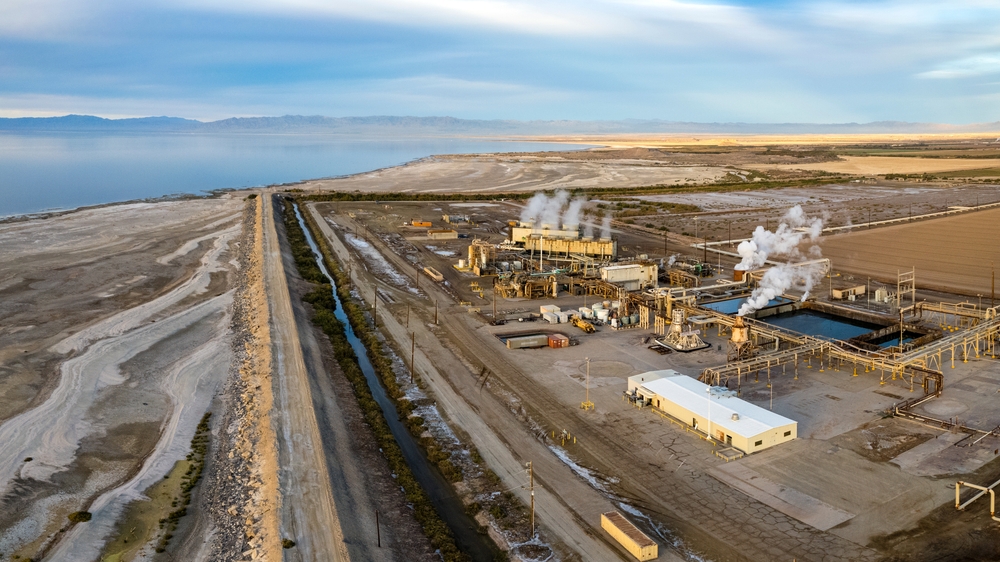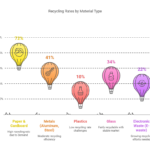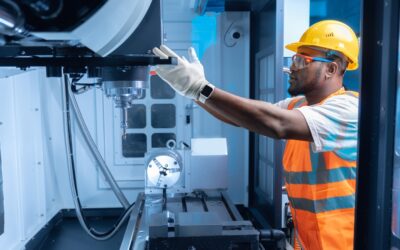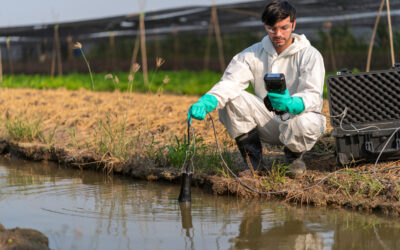A Growing Opportunity in 2025
The renewable energy revolution is transforming industries across Canada, and one of the emerging champions of this green shift is geothermal energy. At the heart of this sector lies a specialized and increasingly sought-after profession: geothermal engineers. These professionals are crucial to the design, development, and maintenance of systems that harness Earth’s natural heat for sustainable power generation and heating solutions.
The Growing Importance of Geothermal Energy in Canada
Geothermal energy has been a reliable but underutilized source of renewable power in Canada for decades. By 2025, it is finally taking its rightful place alongside solar and wind energy. With Canada striving to meet ambitious carbon neutrality goals, both government and private sectors are increasing investments in sustainable energy systems, including geothermal.
Key Drivers of Growth:
- Government Initiatives: Canada’s commitment to the Pan-Canadian Framework on Clean Growth and Climate Change is driving investments in renewable energy, including geothermal.
- Technological Advancements: Innovations in drilling technology and reservoir management are making geothermal projects more feasible and cost-effective.
- Corporate Sustainability Goals: Canadian corporations are increasingly adopting renewable energy sources to meet their sustainability targets, boosting demand for geothermal solutions.
These advancements mean that demand for geothermal engineers is soaring—and the talent pool is struggling to keep pace.
Who Are Geothermal Engineers?
Geothermal engineers are specialized professionals who work at the intersection of geoscience, engineering, and renewable energy. They design systems to extract geothermal heat from beneath the Earth’s surface and convert it into usable energy. Their work involves feasibility studies, drilling operations, reservoir modeling, plant design, and performance optimization.
Key Responsibilities:
- Conducting Geological Surveys: Identifying ideal locations for geothermal reservoirs.
- Drilling and Well Design: Collaborating with drilling teams to construct wells that maximize energy extraction while minimizing environmental impact.
- System Design: Developing efficient geothermal power plants and heating systems.
- Monitoring and Maintenance: Ensuring geothermal systems operate at peak performance, addressing scaling, corrosion, and other challenges.
With a skill set that spans engineering, geology, and energy systems, geothermal engineers are indispensable to sustainable energy projects.
The Skill Set of a Successful Geothermal Engineer
To better understand why geothermal engineers are in such high demand, it’s important to dive deeper into the skills required for success in this niche field. Geothermal energy projects are highly technical and require a multidisciplinary approach. Engineers in this field must master a combination of technical expertise, environmental awareness, and project management skills. Below is an outline of the key competencies that make geothermal engineers indispensable to the renewable energy sector.
Technical Expertise
Geothermal engineers need a strong foundation in several engineering disciplines, including:
- Thermodynamics and Heat Transfer: Understanding how heat flows through different materials and systems to optimize energy extraction from geothermal resources.
- Geophysics and Geology: Knowledge of Earth’s structure and tectonic activity is crucial for identifying and analyzing geothermal reservoirs.
- Fluid Mechanics: Managing high-pressure fluids, such as steam or brine, requires expertise in fluid dynamics to ensure safe and efficient operations.
- Reservoir Modeling: Using advanced simulation software to create models of geothermal reservoirs, predicting energy output, and ensuring sustainable resource management.
- Drilling Technology: Familiarity with drilling processes and equipment is essential for constructing geothermal wells that reach significant depths.
Environmental and Regulatory Knowledge
Geothermal energy projects must comply with environmental regulations and minimize ecological disruption. Engineers in this field need to:
- Evaluate Environmental Impacts: Assess potential impacts such as groundwater contamination or induced seismicity.
- Ensure Regulatory Compliance: Navigate local, provincial, and national regulations, including environmental assessments and permits.
- Implement Sustainable Practices: Use methods like re-injecting used geothermal fluids back into the ground to maintain reservoir pressure and reduce environmental risks.

Project Management and Team Collaboration
Geothermal energy projects are large-scale undertakings that require collaboration among multiple stakeholders, including geologists, engineers, construction crews, and policymakers. Geothermal engineers often take on leadership roles, requiring them to:
- Oversee Project Planning and Execution: Manage the design and implementation phases of geothermal projects.
- Coordinate Interdisciplinary Teams: Ensure seamless operations among various departments and specialists.
- Manage Budgets and Timelines: Keep projects on track by effectively allocating resources and adhering to schedules.
Applications of Geothermal Energy
To fully appreciate the value that geothermal engineers bring to the table, it’s worth exploring the diverse applications of geothermal energy. While geothermal power plants are the most prominent use case, this renewable energy source has a wide range of other applications that make it a versatile contributor to a sustainable energy future.
Electricity Generation
Geothermal power plants harness heat from the Earth to produce electricity. These plants can operate in different ways depending on the geothermal resource:
- Dry Steam Plants: Utilize steam directly from underground reservoirs to spin turbines and generate electricity.
- Flash Steam Plants: Convert high-pressure hot water from the ground into steam by reducing the pressure, then use the steam to drive turbines.
- Binary Cycle Power Plants: Transfer heat from geothermal fluids to a secondary fluid with a lower boiling point, vaporizing it to turn the turbines. Binary plants are especially useful for low- to medium-temperature geothermal resources.
Advantages:
- Baseload Energy: Provides consistent power regardless of weather conditions, unlike intermittent renewables like solar and wind.
Direct Use Applications
In addition to generating electricity, geothermal energy can be used directly for heating purposes. Examples include:
- District Heating Systems: Heating homes, schools, and businesses via underground pipelines.
- Agricultural Applications: Maintaining optimal growing conditions in greenhouses and fish farms.
- Industrial Processes: Supplying heat for industries like paper production, food processing, and bottling operations.
Geothermal Heat Pumps
Geothermal Heat Pumps (GHPs) use the stable temperatures found just below the Earth’s surface for heating and cooling buildings. These systems are widely used in residential, commercial, and industrial settings. Unlike geothermal power plants, which rely on high-temperature resources, GHPs utilize low-temperature geothermal energy and can be installed virtually anywhere.
Emerging Trends in Geothermal Engineering
As the geothermal sector continues to expand in Canada, new technologies and approaches are shaping the future of the industry. These innovations are helping to overcome traditional barriers, such as high upfront costs and limited accessibility to geothermal resources. Below are some of the most exciting trends in geothermal engineering:
Enhanced Geothermal Systems (EGS)
Traditional geothermal systems rely on naturally occurring reservoirs of heat, water, and permeability. Enhanced Geothermal Systems (EGS) aim to unlock geothermal potential in areas without naturally occurring reservoirs by artificially creating the necessary conditions. Engineers do this by:
- Drilling Deep into Hot Rock Formations
- Injecting High-Pressure Water: Creating fractures in the rock to increase permeability.
- Circulating Water Through Fractures: Extracting heat for energy generation.
EGS has the potential to drastically expand the geographic availability of geothermal energy in Canada, making it a game-changer for the industry.
Hybrid Renewable Energy Systems
Geothermal energy is increasingly being integrated with other renewable energy sources to create hybrid systems. For example:
- Solar-Geothermal Hybrid Plants: Solar energy provides additional electricity during peak daylight hours, while geothermal ensures a consistent power supply at night.
- Geothermal and Hydrogen Production: Excess heat from geothermal systems is used to produce green hydrogen, a promising alternative fuel for transportation and industrial processes.
Geothermal Desalination
In regions facing water scarcity, geothermal energy is being used to power desalination plants. These facilities use geothermal heat to remove salt and other impurities from seawater, providing a sustainable solution for clean drinking water.
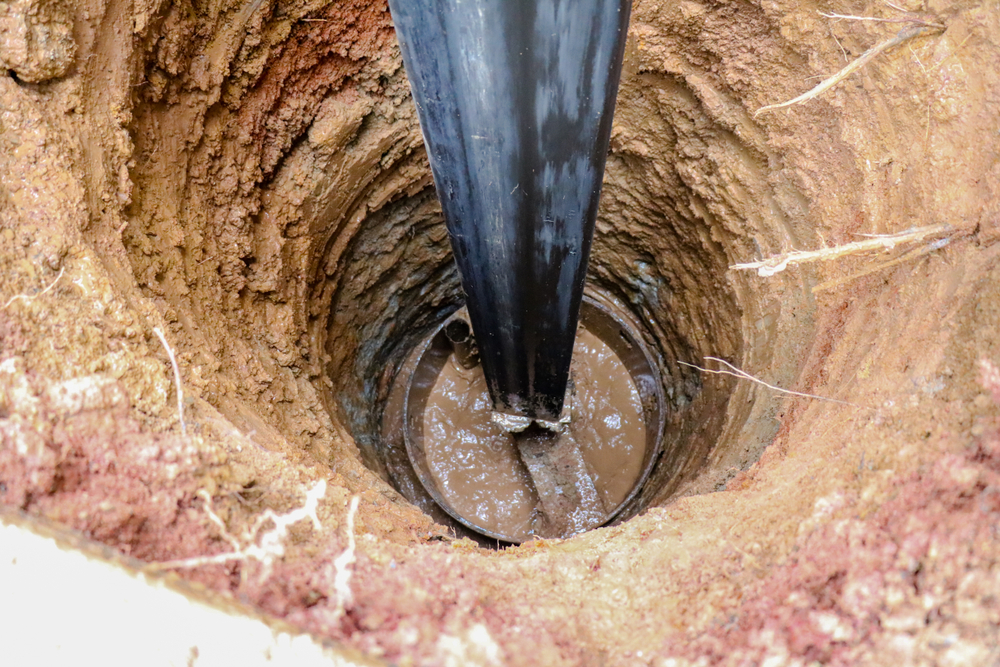
The Economic and Environmental Benefits of Geothermal Energy
Economic Advantages
Geothermal energy projects offer several economic benefits, both at the local and national levels:
- Job Creation: From drilling operations to power plant maintenance, geothermal projects create jobs across a wide range of skill levels. For instance, every megawatt of geothermal capacity generates an average of 2.5 jobs during the construction phase and 1.7 permanent jobs during operation.
- Energy Independence: By harnessing local geothermal resources, Canada can reduce its reliance on imported fossil fuels, enhancing energy security.
- Stable Costs: Unlike fossil fuel prices, which can fluctuate dramatically, geothermal energy costs are predictable over the long term. Once a geothermal system is installed, operational costs are relatively low.
Environmental Advantages
Geothermal energy is one of the cleanest sources of power available today. Its environmental benefits include:
- Low Carbon Emissions: Geothermal power plants emit only a fraction of the greenhouse gases produced by fossil fuel plants. Some binary cycle plants operate with near-zero emissions.
- Minimal Land Use: Geothermal installations have a smaller land footprint compared to solar farms or wind farms of equivalent capacity.
- Renewable and Sustainable: With proper reservoir management, geothermal energy is a renewable resource that can provide power indefinitely.
Geothermal Energy in Canada
Canada’s geothermal energy sector is on the cusp of significant growth. Provinces like British Columbia, Alberta, and Quebec are leading the way with substantial investments and projects aimed at harnessing geothermal resources.
Key Projects and Developments:
- British Columbia: Home to several geothermal projects aimed at providing sustainable heating solutions for urban areas.
- Alberta: Exploring geothermal potential to complement its oil and gas industry, reducing carbon emissions.
- Quebec: Investing in geothermal heat pumps for residential and commercial heating, leveraging its cold climate for efficient energy use.
Government Support:
- Clean Energy Fund: The Canadian government’s Clean Energy Fund is supporting geothermal research and development, providing grants and incentives for innovative projects.
- Provincial Initiatives: Provinces are implementing policies to encourage the adoption of geothermal energy, including tax incentives and streamlined permitting processes.
Addressing Common Misconceptions About Geothermal Energy
Despite its many benefits, geothermal energy remains underutilized due to misconceptions and outdated perceptions. Addressing these myths can help encourage broader adoption:
- Myth: Geothermal energy is only viable in volcanic regions.
- Reality: While volcanic regions are ideal for geothermal projects, technologies like Enhanced Geothermal Systems (EGS) are expanding the geographic scope of geothermal energy across Canada’s diverse landscapes.
- Myth: Geothermal drilling is too expensive.
- Reality: While upfront costs are high, the long-term savings from low operational costs and stable energy prices make geothermal a cost-effective solution. Additionally, government incentives are helping to offset initial investments.
- Myth: Geothermal energy depletes over time.
- Reality: With proper management, geothermal reservoirs can be sustained indefinitely, making it a truly renewable resource.
Staffing Challenges in Geothermal Engineering
Despite the rising importance of geothermal energy, staffing the sector is not without its hurdles. Companies looking to expand their geothermal operations in Canada face significant challenges in attracting and retaining the skilled professionals they need. These issues stem from several factors:
- Limited Talent Pool
Geothermal engineering is a highly specialized field, and there aren’t enough qualified professionals to meet the growing demand. While programs in renewable energy engineering are on the rise, geothermal-specific education and training opportunities remain limited in Canada. As of 2025, only a handful of universities offer dedicated geothermal engineering programs, meaning that companies often compete fiercely for the same small pool of graduates.
- Cross-Disciplinary Skill Sets
Geothermal projects require professionals who can blend knowledge from multiple disciplines, including civil engineering, environmental science, and thermodynamics. It’s rare to find candidates with both the academic background and the practical experience needed for complex geothermal projects, creating a skills gap that recruiters struggle to close.
- Remote Project Locations
Many geothermal resources are located in remote or underdeveloped areas of Canada. Staffing these projects often involves relocating engineers to isolated sites, which isn’t always appealing. The harsh climates and logistical challenges add to the recruitment difficulties.
- Competition from Other Renewable Sectors
With the explosion of renewable energy sectors like wind and solar in Canada, geothermal companies often lose skilled engineers to competitors in these industries. The broader appeal of these sectors—combined with faster project timelines and more accessible locations—can lure away potential geothermal talent.
Staffing Solutions for the Geothermal Industry
To meet the demand for geothermal engineers, staffing strategies need to adapt. Here are some approaches that companies and recruiters can employ to secure top talent in 2025:
- Partnering with Academic Institutions
Developing partnerships with universities is one of the most effective ways to cultivate a future workforce. Companies can sponsor geothermal engineering programs, offer scholarships, and create internship opportunities that expose students to the field early on.
- Upskilling Existing Employees
Retraining professionals from adjacent fields—such as petroleum engineering or mechanical engineering—is a practical way to fill roles. By providing targeted training in geothermal technology, companies can bridge the gap between existing skill sets and the unique demands of geothermal projects.
- Offering Competitive Incentives
Attracting talent to geothermal projects in remote locations often requires offering competitive salaries, relocation packages, and extended vacation policies. Flexible work arrangements, including rotational schedules, can also make remote assignments more appealing.
- Leveraging International Talent
With geothermal energy projects thriving globally, Canadian companies can tap into international talent pools. This may involve recruiting internationally and offering visa sponsorships to bring skilled engineers to project sites in Canada.
Geothermal Engineering in Numbers: 2025 Industry Stats
Here are some key statistics that highlight the importance of geothermal energy and the engineers driving its success in Canada:
| Statistic | Value |
| Installed Geothermal Capacity | Expected to exceed 1 GW by 2025, up from 800 MW in 2023. |
| Geothermal Job Growth | Projected to create over 5,000 jobs by 2030. |
| Drilling Costs | Drilling represents 30-50% of a geothermal project’s total cost, emphasizing the need for skilled engineers to reduce inefficiencies. |
| Provincial Leaders | British Columbia, Alberta, and Quebec are spearheading geothermal projects with new initiatives and investments. |

Why Geothermal Engineers Are Critical in 2025
Canada’s transition to a low-carbon future depends on a diverse mix of renewable energy sources, and geothermal energy provides unique advantages that complement solar and wind. Unlike these intermittent sources, geothermal power offers 24/7 baseload energy, making it a reliable backbone for the energy grid.
Geothermal engineers are instrumental in unlocking this potential. Their expertise allows for:
- Cost Reduction: Through innovative drilling and system design, engineers are driving down the costs of geothermal energy, making it more competitive with other renewables.
- Sustainability: By designing systems that minimize water usage and environmental impact, geothermal engineers ensure that projects align with Canada’s sustainability goals.
- Innovation: Advances in Enhanced Geothermal Systems (EGS) and binary cycle power plants are creating new opportunities for energy extraction, with engineers at the forefront of these innovations.
Closing Clause
As the geothermal energy sector in Canada continues to grow, the demand for skilled geothermal engineers is higher than ever. RSS Staffing Inc in Canada is dedicated to helping companies fulfill their geothermal engineering positions with top-tier talent. Whether you’re looking to expand your geothermal projects or seeking the next step in your engineering career, RSS Staffing Inc can connect you with the right professionals to drive your success.
Key Takeaways
- High Demand: Geothermal engineers are essential for integrating geothermal energy and advancing Canada’s renewable energy infrastructure.
- Competitive Salaries: Attractive compensation packages reflect the specialized skills required in geothermal engineering.
- Continuous Learning: Ongoing education and certifications are crucial to stay updated with industry trends and technological advancements.
- Diversity Matters: Promoting diversity and inclusion enhances innovation and problem-solving in the geothermal sector.
- Strategic Recruitment: Partnering with educational institutions and leveraging technology are effective strategies to overcome staffing challenges.
Resources for Aspiring Geothermal Engineers in Canada
- Engineers Canada: www.engineerscanada.ca
- Women in Renewable Energy Canada (WREC): www.wrec.ca
- Canadian Renewable Energy Association (CanREA): www.canrea.ca
- Geothermal Canada: www.geothermalcanada.ca
- RSS Staffing Inc: www.rssstaffing.ca
Whether you are a Canadian professional aiming to advance your career or an organization seeking to enhance your geothermal energy projects, the demand for skilled geothermal engineers underscores the importance of investing in this critical field. Embrace the opportunities, develop the necessary skills, and contribute to a sustainable energy future for Canada.

